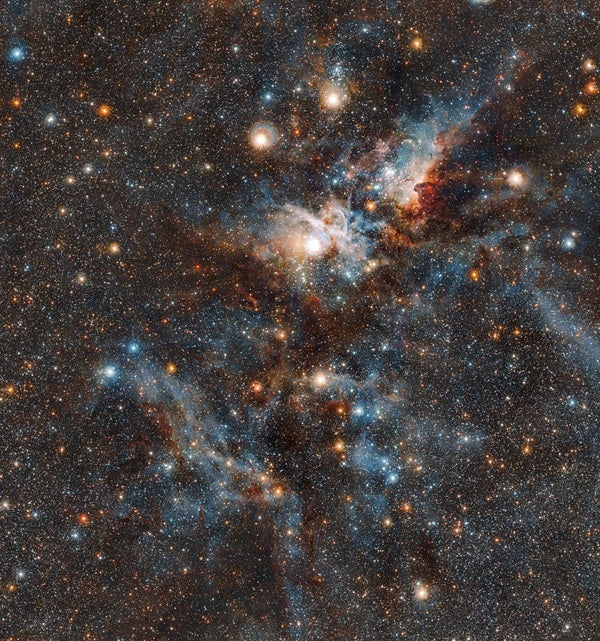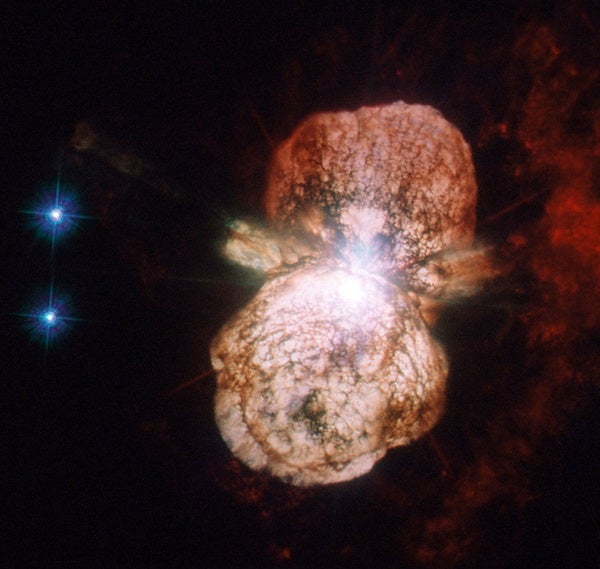But infrared instruments, which are capable of sensing heat, can penetrate the cooler dust and gas of the nebula to reveal what’s going on inside. Recent images from the Visible and Infrared Survey Telescope for Astronomy (VISTA), currently the largest infrared telescope in the world dedicated to astronomical surveys, are now helping astronomers get a better grasp than ever on the inner workings of the region. So far, VISTA has helped researchers identify almost 5 million individual sources of infrared light within the nebula, cataloging forming stars down to just a tenth of the Sun’s mass. Many of these sources are either newly detected or known but poorly studied clusters of young stars.
Another of the nebula’s famous features is the Keyhole Nebula, a dense cloud of gas that lies near Eta Carinae and contains several massive stars that have actively changed the shape of the cloud over the past several hundred years as the winds of charged particles they produce slam into the remaining material.
Over time, young stars destroy the nebulae in which they are born. The energetic light and other particles they emit destroy or blow away the gas and dust surrounding them over time, leaving only the stars behind. But the early stages of star formation are still shrouded in mystery — and dust — making infrared observations that can cut through the dark, obscuring material vital to complete astronomers’ picture of how our galaxy and others birth new suns and planetary systems.











